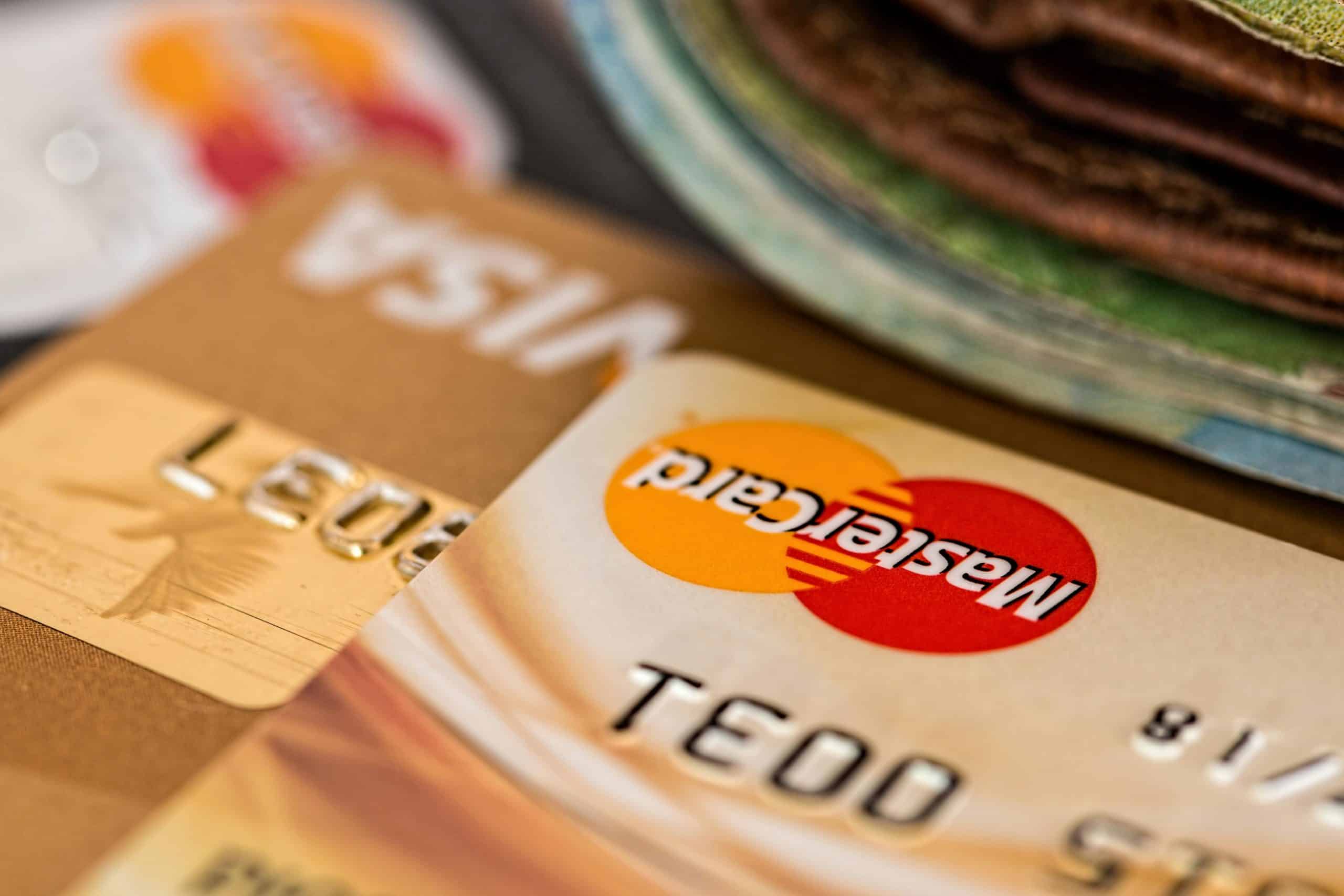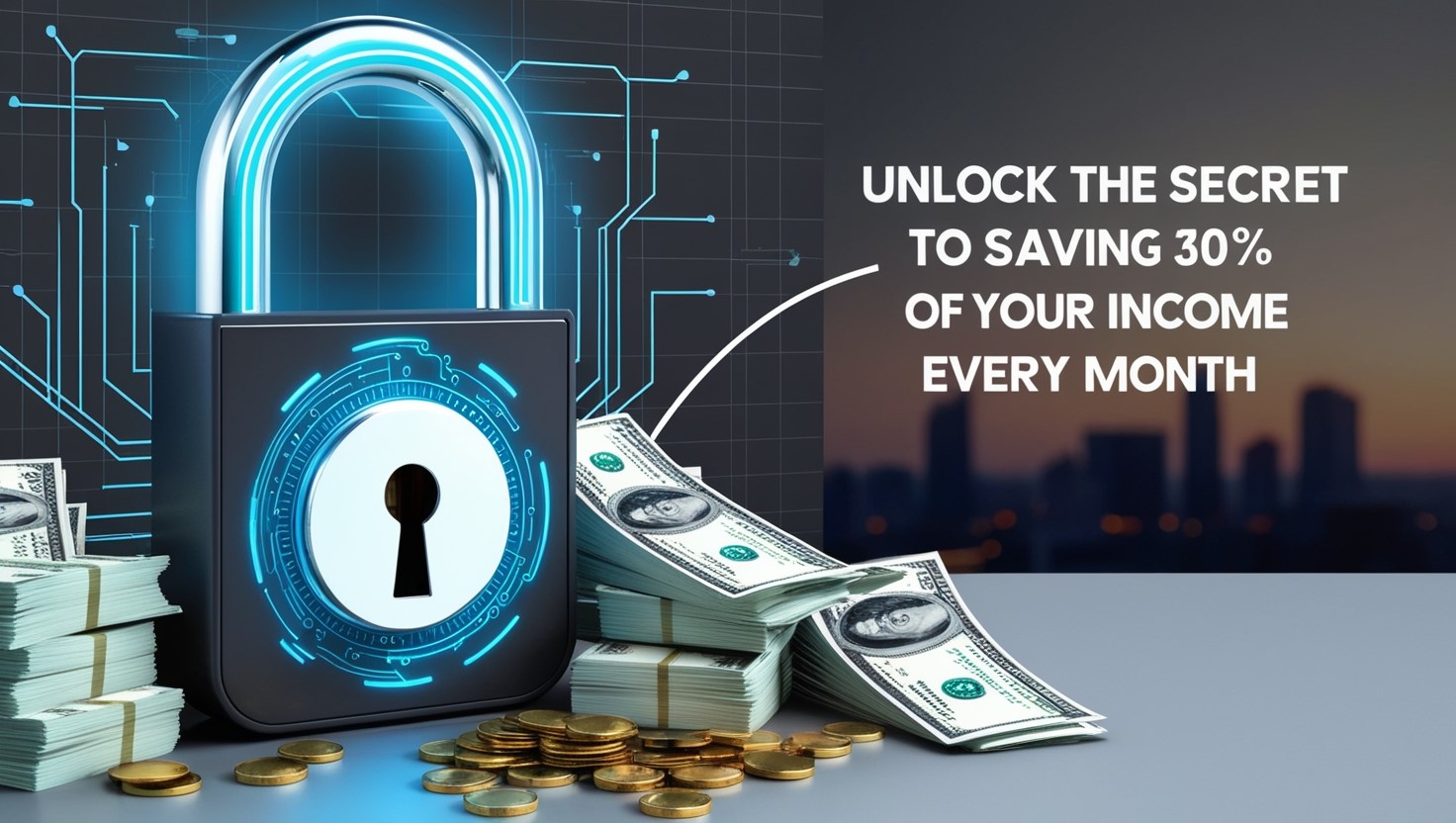Credit Cards as Tools – Use Them Wisely
For years, I was terrified of credit cards. Back in college, I got my first one and treated it like free money. Big mistake. Before I knew it, I was buried in debt—credit cards became a financial black hole that sucked me in for nearly two decades. Every month, I felt trapped under mounting interest and fees, and it seemed like I’d never break free.
But here’s the thing: credit cards aren’t the enemy. They’re a tool, much like a hammer or a saw. In the wrong hands, you can do some real damage. But if you know how to use them correctly, they can actually help build your financial future. The trick is learning how to manage credit cards wisely.
In this article, I’ll share the smart consumer tips that turned my credit card nightmare into a financial success story. By the end, you’ll understand how to use credit cards to your advantage without falling into debt traps. Let’s dive in!
Understanding the Basics of Credit Cards
Before diving into the smart ways to use credit cards, let’s break down how they actually work. Credit cards are a convenient tool that allows you to borrow money for purchases and pay it back later. But, like any financial tool, they come with both advantages and potential risks.
What is a Credit Card?
A credit card is essentially a small, short-term loan. When you make a purchase, the credit card issuer (like Visa, MasterCard, or your local bank) pays the vendor on your behalf. You then owe the issuer that amount, which you’re expected to pay back by the due date. If you pay off the balance in full each month, you get an interest-free loan, a perk often called the “float.”
However, the float disappears if you don’t pay in full. The average credit card APR (annual percentage rate) in the U.S. is around 20%—meaning that any unpaid balance will start racking up interest at a rate much higher than typical loans. According to a 2023 study by the Federal Reserve, 48% of credit card holders carry a balance month-to-month, paying hundreds or even thousands in interest each year.
The Pros and Cons
The Pros:
- Convenience: It’s easier to carry around a credit card than a stack of cash. Plus, most credit cards are widely accepted globally, so whether you’re buying groceries or booking flights, you’re covered.
- Protection: Many cards offer fraud protection, extended warranties, and insurance on purchases. If your card is stolen, the Fair Credit Billing Act limits your liability to $50.
- Building Credit: Responsible credit card use can help build a solid credit history, which is crucial when applying for a mortgage or car loan. According to Experian, individuals with excellent credit scores typically have at least three open credit card accounts in good standing.
- Rewards and Perks: Some credit cards offer cashback, travel points, or other rewards for purchases. These perks can add up over time, giving you value just for spending on things you were going to buy anyway.
The Cons:
- High-Interest Rates: If you carry a balance, interest can pile up quickly. As mentioned earlier, the average credit card interest rate is around 20%, which can make debt grow exponentially.
- Fees: Many cards come with fees, whether it’s for late payments, foreign transactions, or annual maintenance. These can eat into any rewards or benefits you might receive.
- Overspending Temptation: Credit cards make it easy to spend money you don’t actually have. Research from MIT shows that people are likely to spend 12-18% more when using a credit card compared to cash. The psychological distance between swiping a card and parting with physical cash can lead to impulse purchases and overspending.
The Balance Dilemma
The reality is that credit cards only benefit you if you use them wisely. If you carry a balance from month to month, the interest you’re paying likely far outweighs any rewards or perks. The 2021 Federal Reserve report shows that Americans owed a staggering $930 billion in credit card debt, underscoring how easily people fall into the trap of high-interest payments.
The key takeaway? If you can pay your balance in full each month, credit cards offer incredible convenience, protection, and perks. But if you can’t, they can become a costly burden that holds you back financially.
Essential Tips for Using Credit Cards Wisely
Now that we’ve covered the basics of how credit cards work and the potential pitfalls, let’s focus on practical tips to help you make the most of your credit card without falling into debt. Used wisely, a credit card can boost your financial health, but misuse can quickly lead to problems. Below are some essential tips to ensure you’re managing your credit cards smartly and effectively.
Tip 1: Pay Your Balance in Full Every Month
This is the golden rule of credit card use. If you pay off your balance in full each month, you avoid interest charges completely. Essentially, you’re borrowing money for free—taking full advantage of the “float” we discussed earlier. On the flip side, if you carry a balance, you’ll get hit with high-interest rates that can rapidly turn a manageable expense into a financial burden.
According to a 2021 study by NerdWallet, the average household carrying credit card debt pays nearly $1,000 in interest each year. That’s money you could be using to invest or save for future goals. Avoid this trap by setting up automatic payments for the full balance each month, or at the very least, make a habit of paying it off before the due date.
Tip 2: Don’t Spend More Than You Can Afford
It’s easy to fall into the trap of thinking, “I’ll just charge this now and pay it off later.” But that mindset can lead to trouble, especially when emergencies or unexpected expenses arise. A good rule of thumb is to never charge more on your credit card than you can pay off with the cash in your bank account right now.
In fact, a 2019 study by the American Psychological Association showed that more than 65% of Americans with credit card debt admitted they were spending more than they could afford, leading to feelings of stress and anxiety. One way to avoid this is to treat your credit card as a debit card: If you don’t have the money in your checking account, don’t make the purchase.
Tip 3: Monitor Your Credit Card Statements Regularly
Credit card fraud and billing errors are more common than you think. In 2022, the Federal Trade Commission (FTC) received over 400,000 reports of credit card fraud, making it one of the most frequent types of identity theft. By reviewing your statements regularly—at least once a month—you can quickly catch any unauthorized transactions or mistakes before they cause bigger problems.
Personally, I’ve made it a habit to check my credit card statements online once a week. A few years ago, I noticed a $50 charge for a service I never signed up for. After a quick call to customer service, the charge was reversed without any hassle. Had I not been paying attention, that small charge could have gone unnoticed and kept accumulating.
Tip 4: Take Advantage of Rewards Programs (But Carefully)
Credit card rewards can be a great way to get something back for your spending—whether it’s cashback, airline miles, or points for future purchases. However, it’s important to use these rewards wisely. Don’t let the allure of earning points push you into overspending. A 2022 study by ValuePenguin found that 46% of credit card users admitted to spending more than they normally would just to earn rewards.
A good approach is to use rewards for purchases you would make anyway, like groceries, gas, or utilities. That way, you’re getting the benefits without increasing your spending. Also, make sure you’re aware of any fees or penalties tied to rewards cards. Some rewards programs come with higher interest rates or annual fees, which can negate the value of the points you’re earning.
Tip 5: Set a Spending Limit for Yourself
Even if your credit limit is high, it doesn’t mean you should use it all. Setting a personal spending limit based on your budget is one of the best ways to keep your finances in check. According to a report by Experian, the average American has a credit card limit of about $30,000 across all their accounts, but spending anywhere near that limit can harm your credit score.
By keeping your credit card utilization below 30% of your limit, you maintain a healthy credit score. For example, if your limit is $10,000, try to keep your balance below $3,000 at any given time. This shows lenders that you’re responsible with credit and helps improve your credit score over time.
Common Credit Card Pitfalls to Avoid
While credit cards can be valuable financial tools, they can also lead to serious debt and financial stress if not managed wisely. Many people fall into traps that could have been avoided with a bit of knowledge and planning. In this section, we’ll explore some of the most common credit card pitfalls and how you can steer clear of them.
Pitfall 1: Carrying a Balance
One of the biggest mistakes people make with credit cards is carrying a balance from month to month. When you don’t pay off your full balance, you start accruing interest on the remaining amount, and that interest can add up fast. As of 2023, the average annual percentage rate (APR) for credit cards is around 20.3% according to the Federal Reserve.
Let’s put that into perspective: If you have a balance of $5,000 and only make the minimum payment, it could take you years to pay it off, costing you thousands of dollars in interest. A 2022 report by NerdWallet revealed that the average U.S. household with credit card debt pays around $1,380 in interest annually. The best way to avoid this pitfall is to pay off your balance in full every month, ensuring that you’re not paying interest on your purchases.
Pitfall 2: Making Late Payments
It’s easy to miss a payment here or there, but even one late payment can have significant consequences. Not only will you likely be charged a late fee (which can range from $25 to $40), but it can also hurt your credit score. According to FICO, 35% of your credit score is based on your payment history. A single late payment can drop your score by up to 100 points, especially if your credit history is relatively short.
Additionally, making a late payment could trigger a penalty APR, which is even higher than the regular interest rate. Some credit card issuers will raise your interest rate to as much as 29.99% after a late payment. To avoid this, set up automatic payments or calendar reminders to ensure you never miss a due date.
Pitfall 3: Maxing Out Your Credit Card
Maxing out your credit card is a dangerous habit that can hurt your credit score and make it difficult to pay down debt. Lenders look at something called your credit utilization ratio, which is the percentage of your available credit that you’re using. According to Experian, it’s best to keep your utilization ratio below 30% to maintain a healthy credit score.
For example, if you have a credit card with a $10,000 limit and you’re consistently carrying a $9,000 balance, your credit utilization is 90%, which signals to lenders that you may be overextended financially. Even if you’re making minimum payments, this high utilization can hurt your credit score and make you a riskier borrower in the eyes of lenders.
Pitfall 4: Relying on Credit Cards for Emergencies
It’s tempting to think of your credit card as a safety net for emergencies, but this can quickly lead to long-term debt. If an unexpected expense comes up—like car repairs or medical bills—and you don’t have an emergency fund, you might find yourself putting these costs on a credit card and carrying that balance for months (or years). According to a 2023 Bankrate survey, only 39% of Americans could cover a $1,000 emergency with savings, leaving many to rely on credit cards.
A better strategy is to build an emergency fund with at least three to six months of living expenses. That way, when something unexpected happens, you can pay for it without resorting to high-interest credit card debt.
Pitfall 5: Ignoring Fees and Penalties
Many people focus on interest rates but overlook the variety of fees that can be associated with credit card use. These can include annual fees, foreign transaction fees, balance transfer fees, and cash advance fees. According to CreditCards.com, 62% of credit cards come with annual fees, and these can range from $25 to as much as $550, depending on the perks associated with the card.
While rewards cards may offer significant perks, make sure you understand all the costs involved. For instance, if your rewards card has a $100 annual fee but you’re only earning $50 in cashback or points each year, it’s not worth it. Be sure to read the fine print and understand the true cost of using your card.
Pitfall 6: Impulse Spending
Impulse spending is one of the easiest traps to fall into with credit cards. The convenience of simply swiping or tapping can make it all too easy to buy things you don’t need or can’t afford. A 2016 MIT study showed that consumers are willing to pay up to 100% more for a product when using a credit card instead of cash. This psychological disconnect between spending real money and using credit can lead to overspending and, eventually, debt.
A helpful tip is to wait 24 hours before making any non-essential purchases. This “cooling-off” period can help you determine whether you truly need the item or if it was just an impulse.
Advanced Strategies for Credit Card Users
If you’ve mastered the basics of credit card management—paying your balance in full, avoiding late payments, and keeping your spending in check—you’re ready to take your credit card game to the next level. By employing a few advanced strategies, you can not only avoid debt but also optimize the benefits that credit cards offer. Below are some savvy techniques to get more out of your credit cards while staying financially responsible.
Strategy 1: Maximize Rewards Without Overspending
Credit card rewards can be a powerful tool when used correctly. Many cards offer cashback, travel points, or perks like access to airport lounges. However, it’s crucial to earn rewards only on purchases you were going to make anyway. According to a 2023 report by ValuePenguin, 83% of credit card users redeem rewards regularly, yet nearly half of them also admit to spending more than they planned just to earn those rewards.
To make the most of your rewards:
- Consolidate spending on one card: Instead of spreading your purchases across multiple cards, focus on one that offers the best rewards for your spending habits (e.g., groceries, gas, travel).
- Avoid overspending for points: Remember, rewards aren’t worth it if you’re buying things you don’t need. A good rule of thumb is to stick to your budget and treat rewards as a bonus, not a reason to splurge.
Strategy 2: Take Advantage of 0% Introductory APR Offers (But Beware)
Many credit cards offer 0% APR for an introductory period—usually 12 to 18 months—on purchases or balance transfers. This can be a great way to finance a large purchase or pay down existing debt without accumulating interest. However, you need to be cautious with this strategy. If you don’t pay off the balance before the promotional period ends, you’ll be hit with the regular APR, which can be as high as 25% according to CreditCards.com.
Here’s how to use this strategy wisely:
- Only make purchases you can afford to pay off within the intro period. Don’t view the 0% APR as free money—it’s a short-term tool to manage expenses.
- Be sure to pay off the balance before the promotional period ends. Set a target to pay off your balance well before the deadline to avoid any interest charges.
Strategy 3: Leverage Credit Card Benefits for Travel
If you’re a frequent traveler, certain credit cards can offer significant perks like free checked bags, access to airport lounges, or travel insurance. In fact, The Points Guy notes that some travel credit cards can save users hundreds of dollars per year with these benefits. For example, the Chase Sapphire Reserve card offers a $300 annual travel credit, which can offset its $550 annual fee.
To maximize your travel benefits:
- Choose a card that aligns with your travel habits. If you frequently fly with a specific airline or stay at a particular hotel chain, look for a co-branded card that offers specific rewards.
- Use the perks to their full potential. Take advantage of complimentary lounge access, TSA PreCheck credits, and trip insurance, but only if they suit your travel needs.
Strategy 4: Stack Rewards Programs
One of the lesser-known strategies of savvy credit card users is stacking rewards programs. This involves using your credit card in conjunction with retailer loyalty programs or cashback websites to double or even triple your rewards. For example, Rakuten offers cashback for shopping through their platform, which you can stack with the rewards from your credit card.
Here’s how to stack rewards effectively:
- Shop through cashback websites or apps. Sites like Rakuten, Honey, or Ibotta offer cashback when you shop through their portals. Combine this with your credit card rewards to maximize benefits.
- Join retailer loyalty programs. If you frequently shop at a particular store, sign up for their loyalty program and use your credit card for purchases. You’ll earn both store-specific rewards and credit card rewards.
Strategy 5: Keep Your Credit Utilization Low (Even if You Have a High Limit)
Your credit utilization ratio—how much of your available credit you’re using—plays a significant role in your credit score. According to FICO, keeping your utilization below 30% of your available credit is ideal, but keeping it under 10% is even better for boosting your credit score.
If you have a high credit limit, it’s tempting to use more of it, but doing so can harm your credit score. Instead:
- Make multiple payments each month. If you tend to spend a lot on your credit card, consider paying off part of the balance mid-month to keep your utilization low.
- Request a credit limit increase. If you’ve been a responsible cardholder, many issuers will grant you a higher limit if you ask. This can help lower your utilization ratio, but remember not to use the extra credit as an excuse to overspend.
Strategy 6: Use Credit Cards to Build (or Rebuild) Credit
If you’re trying to build or rebuild your credit, using a credit card responsibly is one of the best ways to do it. According to Experian, maintaining a good payment history, keeping your credit utilization low, and having a mix of credit types (e.g., credit cards, installment loans) are key factors in building a strong credit score.
Here’s how to use your card to build credit:
- Make small, regular purchases. Use your credit card for recurring expenses like groceries or gas, and pay it off in full each month. This demonstrates consistent, responsible use to lenders.
- Avoid applying for too many cards at once. Each time you apply for a new card, it results in a “hard inquiry” on your credit report, which can lower your score temporarily. Apply only when necessary and focus on building credit with the cards you have.
Final Thoughts: Credit Cards Can Work for You if You play by the Rules
Credit cards aren’t inherently bad—they’re simply a tool, and like any tool, how you use them makes all the difference. By understanding the basics of how credit cards work, following essential tips for managing them wisely, and avoiding common pitfalls, you can turn your credit card from a financial burden into a valuable ally.
The statistics speak for themselves: according to Experian’s 2022 State of Credit Report, the average American carries around $5,221 in credit card debt, and 30% of consumers have a credit utilization rate above the recommended 30% threshold. However, those who use their cards responsibly—paying off balances in full, keeping utilization low, and maximizing rewards—can enjoy the convenience and benefits without falling into debt.
Credit cards, when used wisely, can help you build a strong credit score, earn valuable rewards, and provide financial flexibility. But mismanagement—like carrying a balance or making late payments—can quickly lead to high-interest debt and a damaged credit profile. The key is to play by the rules: set personal guidelines, stick to a budget, and make decisions with a long-term view of your financial health.
So, take control of your credit cards. Apply the tips and strategies outlined in this article, and turn your credit cards into a financial tool that works for you—not against you. In the end, mastering the art of credit card use can free you to focus on what really matters: building a solid financial future.



